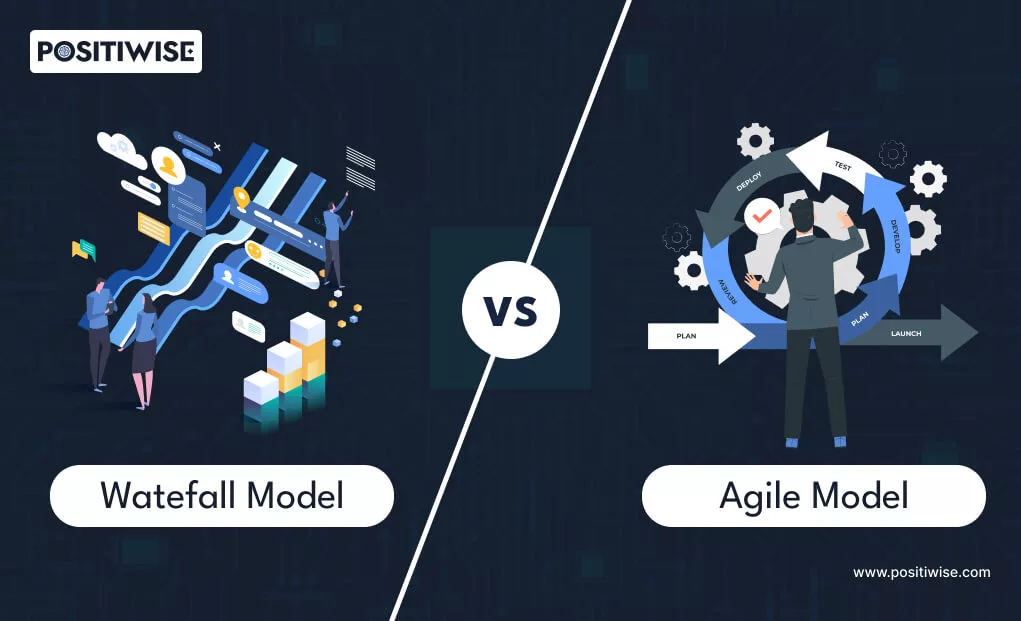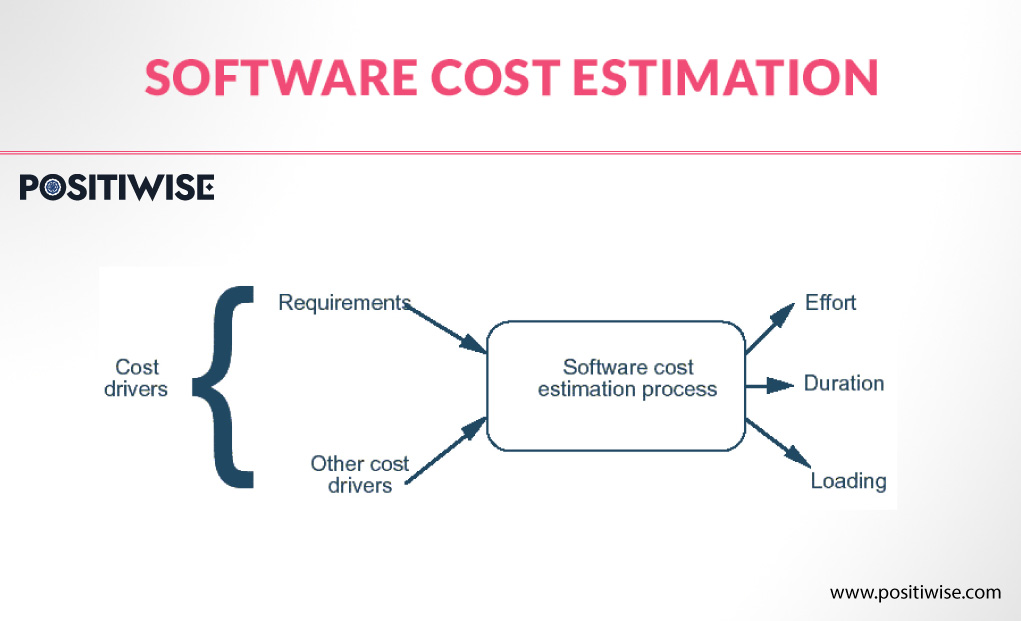Quick Overview:
There are two well-known management processes involved in this project: Waterfall VS Agile Model. In this blog, we will focus on the waterfall vs agile model of software development life cycle. Agile, on the other hand, is not only flexible and iterative but also enables constant adaptation and improvement. This article compares and distinguishes the benefits and drawbacks of Agile and Waterfall project management and their approaches.
Introduction
There are two well-known project management methodologies: waterfall and agile. Although they are both well-liked in the software development community, they work best on distinct kinds of projects. The primary distinction is that Agile encourages members to work on many project stages concurrently, whereas Waterfall is a sequential working method that demands the team to finish each phase before going on to the next. We hope this post will be useful to you in learning about the differences between the waterfall and agile models.
Project Management: Understanding What is It?
Planning, initiating, executing, tracking, and closing are the general steps in the project management process. Later in this post, we’ll go into more detail about each of those phases. Project management is frequently linked to the engineering, building, and, more recently, the healthcare and information technology industries. These sectors usually include a complicated collection of parts that must be finished and put together in a certain way to produce a working result.
Project managers often have the same duties regardless of the industry: they assist in defining the objectives and goals of the project. That helps you decide who is responsible for completing each component at what time. Additionally, they develop quality control procedures to guarantee that finished parts fulfill predetermined criteria.
What is Project Management Using Agile Methodology?
The main goal of this technique is to minimize the loss of time and resources. Creating more value for consumers while using fewer resources is the fundamental goal. The objective of project management using this methodology is comparable to the lean organization production philosophy. Only the assets that directly aid in the project’s successful completion will be employed.
These are only a few of the most popular project management approaches and kinds; there are many more. The kind chosen will rely on the project managers or the organization managing the project’s preferences.
What is Project Management With The Waterfall and The Agile Model?
One of the first industries to apply this concept was the computer software sector. Agile project management is an iterative process centered on the ongoing monitoring and enhancement of deliverables, with its foundation coming from the 12 essential principles of the Agile Manifesto. Fundamentally, delivering value to customers, fostering team dynamics, and adjusting to changing business conditions lead to high-quality outputs. Agile project management does not work in a step-by-step, sequential fashion. Instead, different team members inside an organization execute the project’s phases concurrently. Errors may be found and fixed with this method without needing to start the process from scratch.
The only difference between this and typical project management is that each work must be finished before the next can begin. Progress moves in a single direction, much like a waterfall, and steps are linear. Because of this, in this kind of project management, paying close attention to work sequences and schedules is crucial. The team engaged with the project will frequently grow as smaller assignments are finished and larger ones are initiated.
How to Select the Best Methodology for Your Project: Waterfall VS Agile Model
Does your project have any stringent rules or specifications? Because each phase’s deliverables and tight processes guarantee that they are fulfilled, waterfall projects work better for those with restrictions or requirements. Given that safety is a primary concern, several industries—such as the Department of Defence and the aerospace sector—would prefer to employ Waterfall over Agile.
Take into account the level of involvement that stakeholders or project owners will have while deciding between Agile and Waterfall. Agile works best on projects in which stakeholders are actively involved from start to finish. The project management technique known as waterfall lacks flexibility and is more regimented.
When to Use Waterfall VS Agile Methods
Established projects with well-defined requirements, little complexity, and a set timeframe are best suited for managing waterfall projects. When the client’s requirements are clear, and there aren’t any major modifications to the project’s scope or technology, waterfall development works effectively. The waterfall approach is appropriate for projects that have the following features:
- Basic requirements and scope analysis
- Tasks are arranged in a clear and sequential order
- Deliverables that are predictable due to deadlines
- Organized procedures
- Strict quality assurance procedures
- Commitment from all parties concerned in the long run.
Agile project management works well when there are tight deadlines and budgets, when complex systems necessitate constant communication loops, or when the final objective may be ambiguous or challenging to define. Because it enables fast iteration and validation along the route, it is very useful for designing software applications. Agile is also beneficial for teams that must work closely together, such as those that are dispersed across multiple regions.
Explore The Waterfall VS Agile Model
Software teams were the first to adopt agile, switching from the conventional, sequential waterfall technique to a process that gathered regular feedback and adjustments during the development lifecycle. Agile project management creates several incremental phases with regular feedback intervals, taking an iterative approach to development. This encourages flexibility because a team is not limited to a straight line during the product creation procedure but may make adjustments as needed. Additionally, it permits frequent, high-impact releases, which help teams achieve a string of victories over time. Iterative releases provide a team with several chances to:
- Adjust to shifting conditions, such as newly identified needs or a task that has been stalled.
- A final delivery date shouldn’t stress you out; instead, get input from stakeholders early in the process and iterate quickly in response.
- Create links and relationships between people in different jobs to facilitate efficient communication.
The software team’s common skill sets provide even more advantages. The work in every section of the team’s codebase is made more flexible by the overlap of skill sets. In this manner, if the project’s direction changes, labor and time are not squandered.
Crucial Distinction: Waterfall VS Agile Model
In the software development process, Agile is a continuous iteration of development and testing, while Waterfall is a linear, sequential life cycle model. When it comes to software development methodologies, Waterfall is an organized approach, whereas Agile is renowned for its flexibility.
Contrasting the iterative approach used by Agile with the sequential design process of the Waterfall technique. Whereas testing in the Waterfall technique occurs after the “Build” phase, testing in the Agile methodology occurs simultaneously with software development.
Does Agile Cost More Than Waterfall And Its Advantages
Because of its continuous feedback loops, agile may look more expensive at first, but by resolving problems early and providing benefits gradually, it frequently lowers costs over time. Because waterfall has fixed costs upfront, it may result in increased expenditures down the road if adjustments are required. The needs and context of the project determine its cost-effectiveness.
The agile software development technique is distinguished by its flexible and iterative approach to software development. It places a strong emphasis on cross-functional teamwork and gives flexibility in response to shifting needs during the development process.
Flexibility: Agile enables teams to adjust to shifting priorities and requirements, guaranteeing that the finished result satisfies stakeholders’ changing demands.
Faster Production: Agile facilitates the faster delivery of functional software by segmenting the project into smaller steps, which enables prompt feedback and validation.
Cooperation: Agile encourages team members to work together, which improves communication and transparency throughout every stage of the development cycle.
Continuous Enhancements: Agile’s iterative structure promotes continuous improvement as teams are constantly reviewing their performance and adjusting as needed in response to input.
The requirements that are gathered at the beginning of the project are intended to be only sufficient to get things moving and to be further developed just before they are put into practice. We welcome revisions to the requirements. The creation of a new air traffic management system, which would be a big, complicated project with a lot of risk and uncertainty, might be using the Spiral SDLC approach.
Agile encompasses much more than just iterative programming; it emphasizes in-person interactions over written correspondence and the integration of technical and business personnel in daily tasks. An emphasis on jointly creating value rather than creating and then carrying out a contract.
Examine the Benefits of the Waterfall Model
A sequential life cycle for a product model is also mentioned. Each step in the waterfall method needs to be finished before moving on to the next. Smaller projects, or ones with specific criteria, are typically managed using this kind of project management. Every phase concludes with a review to see if the project is headed in the right direction or needs to be adjusted.
Work Structure: The waterfall approach produces a clear work structure by concentrating on a specific and well-defined collection of stages. Before going on to the next phase, teams have to finish the current one. That way, any roadblocks to finishing are apparent right away.
Simplifying Follow-Up: With this approach, you can easily visualize how the project is progressing. This implies that there is no prerequisite for project management certification or specialized training.
Defining Goals Clearly: One of the waterfall model’s features is its early identification of the objectives that must be met. As a result, teams are given clarity and can operate with constant focus and attention to the final objective.
Enhancing Traceability and Communication: The Waterfall technique is systematic by nature. This indicates that it is predicated on standardized procedures that support accurate and effective information sharing.
Sample Situations Where You Can Gain from Agile
- Project Delivery: To help you further, the following particular situations, project kinds, and settings frequently profit from an agile approach to project deliveries.
- Technical projects: Agile gives teams a structured method for creating sophisticated software or goods. Without needing a 45-person programming or re-planning meeting, many teams may interact in an orderly manner.
- Creative projects: An agile methodology helps projects that require a lot of creative problem-solving issues since it promotes experimentation and creative thinking.
- Innovation in products and development: Agile workflows enable team members to have more freedom throughout the process, which is beneficial for businesses that need to remain ahead of the competition by creating new goods or upgrading current ones.
- Startups: They frequently have to provide goods or services quickly with few resources. They may create and implement ideas more quickly thanks to agile approaches, which also enable rapid prototyping and iteration on the spot. Agile development methodologies provide fast prototyping and high-quality final product delivery without requiring a lot of time for planning, sourcing, permissions, and more.
It is important to take into account several elements, such as the project’s nature, budgetary limits, timeframe, and stakeholder demands. Agile is the best method for projects with unknowns, high risk, or constantly changing needs because of its adaptable and flexible approach. However, the waterfall’s methodical, disciplined approach is most effective in projects that have well-defined criteria and a distinct end objective.
Conclusion
In conclusion, there are two distinct management approaches—Waterfall VS Agile Model—that are better suited for particular kinds of projects. Waterfall could be the best option if you know exactly what the project results are going to be from the start. Since waterfall demands deliverables for each phase before moving on to the next, it is a superior approach when a project needs to adhere to tight restrictions.
Agile, on the other hand, works well with teams that want to move quickly, experiment with different approaches, and have no idea how the project will turn out in the end before it begins. Agile methodology is adaptable and demands a self-driven and cooperative team in addition to regular updates on progress from stakeholders and company owners.
About Us
We have over twenty years of experience with cutting-edge technologies; we provide excellent .NET and Python web application development leveraging agile methodology. Our team is adept at developing scalable, adaptable, high-performing solutions for various platforms. If you’re looking for a quick, visually appealing, cross-platform mobile, desktop, IoT, or web application, our .NET development services are available. To maximize customer availability, we additionally provide cloud and multi-tier app development.
Join us to get customized solutions that will accelerate the rapid growth of your business’s operations.
For more details, check our site – Positiwise.com
Expert in Marketing Strategy and Brand Recognition
Jemin Desai is Chief Marketing Officer at Positiwise Software Pvt Ltd, he is responsible for creating and accelerating the company’s marketing strategy and brand recognition across the globe. He has more than 20 years of experience in senior marketing roles at the Inc. 5000 Fastest-Growing Private Companies.






